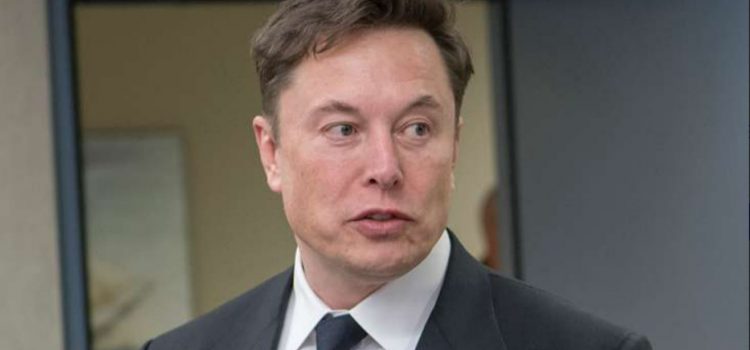

This article is an excerpt from the Shortform book guide to "Elon Musk" by Ashlee Vance. Shortform has the world's best summaries and analyses of books you should be reading.
Like this article? Sign up for a free trial here .
What does Elon Musk’s management style look like? Is it possible for you to replicate his management style at your business?
Elon Musk’s management style involves five methods that led him to success. However, he’s also been known to cross the line when it comes to overworking, retaining control, and setting deadlines.
Keep reading to learn more about Elon Musk’s management style.
Applying an Elon Musk Management Style
Below are some common methods that Musk used that helped his companies succeed. Through a combination of hiring exceptional employees, maintaining control of his companies, organizing cross-functional teams, and setting extreme deadlines, Musk’s businesses have achieved impressive results.
1. Exceptional Employees
Vance believes much of Musk’s success stems from his ability to find and hire exceptional people. He has an eye for talent, and he appreciates people who are hard workers and critical thinkers. These employees are also efficient, and they can do the work of multiple people. When every employee is doing exceptional work, the combination of their efforts results in something exceptional as well. An Elon Musk management style depends on exceptional and accountable employees.
Musk handled a majority of the recruiting and hiring for all of his companies, and he found many talented employees.
- Many of the engineers from X.com and PayPal went on to create start-ups like YouTube, Palantir Technologies, and Yelp.
- Musk recruited Gwynne Shotwell for SpaceX. Vance notes that she is as dedicated to going to space as Musk is. She is now the president and chief operating officer of SpaceX.
- For Tesla, Musk recognized the ideas and talents of Straubel, Eberhard, and Tarpenning, and he paired them together to speed up the process of developing an exceptional electric car.
However, Vance explains that these exceptional employees must also be willing to remain in the background of the operations and allow Musk to have the limelight. Tom Mueller, one of the engineers at SpaceX, has proven this. He helped Musk develop the plan for the initial SpaceX rocket, opening up the possibility of building a new rocket at a lower cost. Mueller remained at SpaceX, but he doesn’t publicly take much credit for his part in SpaceX’s rocket development.
| Overworking and Injuring Employees While Musk values star players like Shotwell and Mueller for their efficiency and hard work, he may have a tendency to overwork—and even injure—these exceptional employees. According to incident reports, Tesla called for ambulances over 100 times between 2014 and 2017 for reasons such as dizziness, seizures, abnormal breathing, and other injuries. One technician noted that sometimes when someone got hurt on the job, another employee was sent to work around that person while they were still injured on the floor. In October 2016, Tesla reduced the time of their average workday since employees were putting in 12-hour days, six days a week. Tesla reported that the change caused a 50% decline in overtime hours. This may also help the long-term effects of working long periods of time in uncomfortable positions, which have caused arm and chest pain for some employees. Musk said he put his office in the most uncomfortable place, slept in the office, and put in more hours than his employees to show that he was working just as hard as they were. |
2. Retain Control of Companies
After his experience at Zip2 and PayPal, Musk valued maintaining control of his companies. He knows leadership positions give him the most influence, allowing him to run his business how he wants to.
Vance explains that Musk doesn’t have a desire for totalitarian control. Instead, he’s concerned about making sure things get done correctly. Musk believes there are certain things that need to be done to achieve his vision, and he thinks he’s the best one to make sure those things happen. This tactic has helped Tesla and SpaceX succeed, since Musk has the vision and drive to effectively lead and make business decisions.
Musk kept control of Tesla and SpaceX by being the largest shareholder and being CEO. While Tesla’s precarious financial situation forced it to go public, Musk resisted making SpaceX a public company. Vance notes that he didn’t like how short sellers messed with Tesla’s stock or how Tesla’s financial statements were available for scrutiny. Musk wanted to retain control of SpaceX and to avoid the volatility of going public.
3. Cross-Functional Teams
Vance explains how the Elon Musk management style implements cross-functional teams. Musk uses a cross-functional approach to his businesses in which employees from different departments and with different skills work together on a project or goal. This allows the teams to come up with better, more inventive solutions using employees’ expertise.
Vance discusses how Musk’s approach is different from other manufacturers, who wait weeks for another department to hear about and fix problems. Musk has engineers and technicians work together to complete tasks. When testing Tesla’s cars for weather and temperature performance, software engineers and technicians were there to make software changes on the spot. Other manufacturers sent the test data back to the offices where employees would analyze results, make changes, and go back later for more rounds of testing. Musk’s tactic maximizes efficiency and technological improvements.
(Shortform note: Musk’s companies benefited from having his teams work toward a common goal, which supports experts’ claims that cross-functional teams perform better, resolve conflicts, effectively engage employees, and cause employees to feel more appreciated. Other benefits include a more collaborative work culture, opportunities to learn leadership skills, and improved insight and innovation when solving problems.)
Musk’s cross-functional approach is even reflected in the design of the SpaceX facility. Offices for engineers are located in the middle of the factory, forcing engineers to walk through the factory floor and talk with technicians. The walls of the office are glass, so engineers can see the work that technicians do. Vance believes this design creates a collaborative atmosphere, rather than making departments separate from each other. All departments work together toward a common goal.
4. Vertical Integration
Vance explains how the Elon Musk management style applies vertical integration. This is when a company controls as much of its production and supply chain as possible, rather than outsourcing labor from a different country or buying parts from another company. If a part was too expensive, Musk wanted employees to create a newer, better part that cost less to make. As a result, SpaceX produces almost 90% of its parts and electronics for its rockets.
5. Ambitious Deadlines
In all of his companies, Musk set ambitious deadlines for both himself and others. He told employees, consumers, and executives that certain tasks or products would be completed faster than anyone thought possible. Vance believes he wasn’t setting an arbitrary timeline—this was genuinely how long Musk believed it would take to complete certain tasks.
Employees soon understood that if Musk said something would take a day, it would actually take a few days or a week to do. They also learned to create daily—and sometimes hourly—schedules that included bathroom breaks. Employees understood the consequences of not meeting these deadlines.
Although setting these extreme deadlines put a lot of pressure on Musk and his employees, this habit is a large part of Musk’s success. Musk rarely met these deadlines, but by creating an extremely ambitious schedule, his teams achieved impressive results in a faster time frame than anyone else thought possible. For instance, NASA took about a decade to build a satellite; Musk’s original goal was to launch a rocket into space in a year and a half. Given NASA’s timeframe, Musk’s deadline seemed impossible. It took SpaceX six years to successfully launch the rocket. While SpaceX didn’t meet the original goal, completing the rocket in six years was still faster than anyone in the industry had predicted.

———End of Preview———
Like what you just read? Read the rest of the world's best book summary and analysis of Ashlee Vance's "Elon Musk" at Shortform .
Here's what you'll find in our full Elon Musk summary :
- A look into Elon Musk’s childhood and early companies
- Musk's roles in SpaceX and Tesla, and later, in SolarCity
- The traits and management methods that helped Musk succeed






